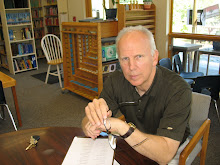I recently spent a week in the Holy Lands. I was invited as half of a two-person team to present leadership training to 20 Principals of private schools in the West Bank, in Palestine. I was a little intimidated at the prospect. Would they value what I had to offer? Would I be understood by people from such a different linguistic and cultural background? Would I be welcomed as an American? The answer to all three questions was a resounding “yes.”
I ended the seminar with a story. As I told the participants, this is the story a Montessori teacher would tell when introducing the degree symbol in studying measurement of the circumference of a circle.
Story of the Babylonians
Do you remember when we talked about the Babylonians? How they lived in the area between the two rivers, the Tigris and Euphrates in what is now Iraq? How the Hanging Gardens of Babylon were one of the 7 Wonders of the Ancient World? Even though the height of their civilization was 4000 years ago we still are talking about them and benefiting from their discoveries and inventions today.
I want you to think back to what their life was like those many years ago. They didn’t have electricity, so in the evening when it would get dark they wouldn’t be able to do what you do, read or watch TV. They would gaze at the stars and they would tell stories. Even so large a city as Babylon would be quite dark at night. Have you ever been out at night and away from the city and seen how many stars you can see in the sky? Because of their life between the two rivers they were great travelers and would also have used the stars for navigation.
So they looked at the stars and compared where they were in the sky against certain landmarks like mountain peaks and they noticed that it looked as if the stars were in a slightly different position each night. They came to think of the sky as a circle and their home as the center of that circle with the stars very slowly wheeling overhead. They counted and noticed that it took about 360 days for a star to complete its circuit and come back to the same position in the sky. So they used 360 days as a measure of time that we now call a year.
We now know that there are actually 365 days in a year and perhaps the Babylonians knew it too. But, in Babylon, 60 was a holy number. When they built a temple it would have 60 steps; when they made an offering of wheat in their temple they would offer 60 grains. 360 is a multiple of 60, so, perhaps they decided to honor the year by making it 360 days.
Somebody in Babylon, and we don’t know who, realized that this could also be a useful way of thinking about any circle, not just the circle of the night sky. He or she decided that whenever we see a circle we could divide it into 360 parts. Do you remember the fraction insets and how we divided a circle into 10 parts each of which we call a 10th? Well this person realized that people could divide a circle into 360 fractional pieces and in their language they called it something which we now call a degree.
Let me show you the symbol we write for degree. [At this point the teacher draws a circle on paper.] Now, when you use this symbol, think back to these people 4000 years ago, gazing up at the circle of a black and star-filled Babylonian sky.
Then I looked around at the participants, human beings and educators from across a vast geographical, experiential and cultural divide, but human beings and educators nonetheless, and asked: “Is there an unspoken question implicit in this story for the student to ask him or herself?” Immediately, Iyad, Principal of a large school in Ramallah and a Palestinian Arab, nodded in understanding. “What will my contribution to the world be?”
I’d like to point out three things about this lesson on the degree. First, it’s important for children to learn to measure the circumference of a circle, and it could be done more quickly and easily, but not more effectively. For who can doubt that, once the child’s imagination is engaged, he or she will never forget this lesson. In this way children experience learning not as a series of random memorizations, but as a series of ideas and accomplishments to which they are personally and wondrously connected.
Second, there’s been a lot of talk in recent years of the importance of an integrated curriculum. Can you think of a better example than this, a lesson about which one might ask, “Is this is a lesson in Mathematics, or History?
Thirdly, and most importantly, through stories like this, the Montessori elementary student is imbued with a deep gratitude for the contributions of all of the plants and animals and people who have come before. This speaks to the truest and deepest purpose of education, as these Palestinian school principals immediately grasped. The outcome of education we all wish for, and which our world so desperately needs, is not students who ask “What is the world going to do for me?” but students who ask themselves, “What am I going to do for the world?”
